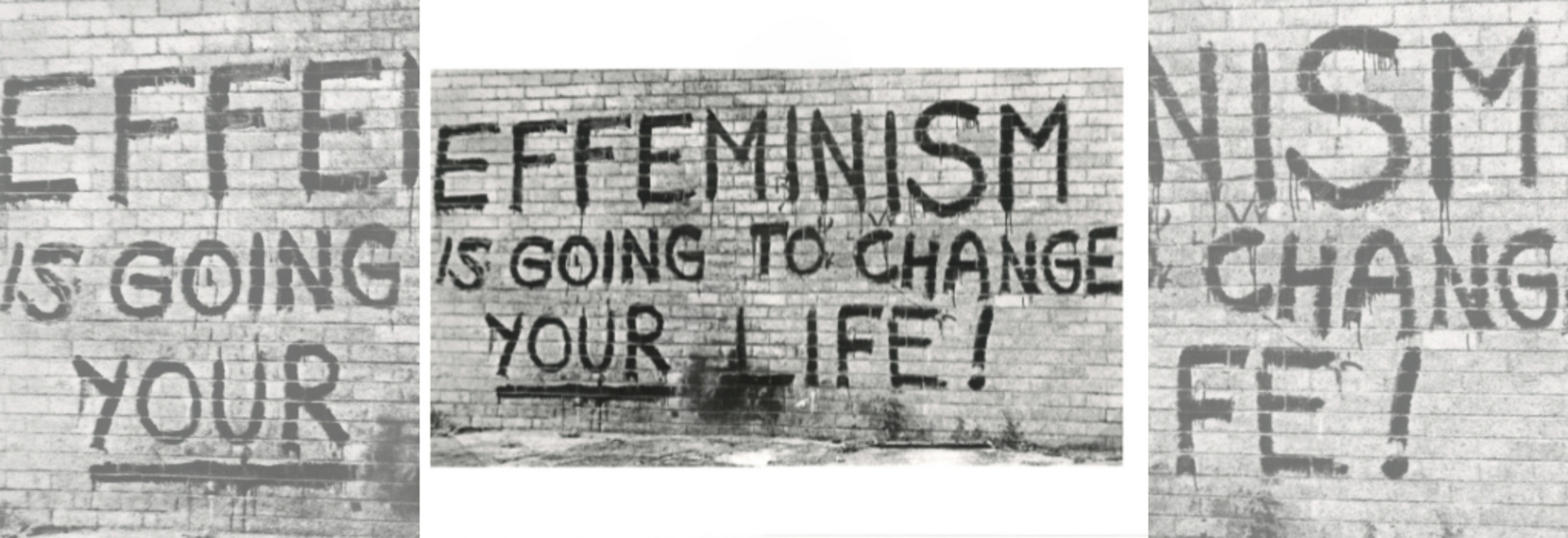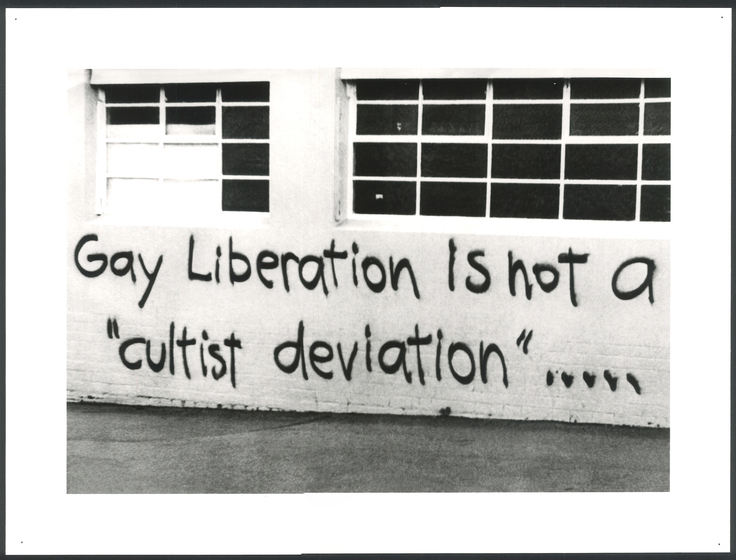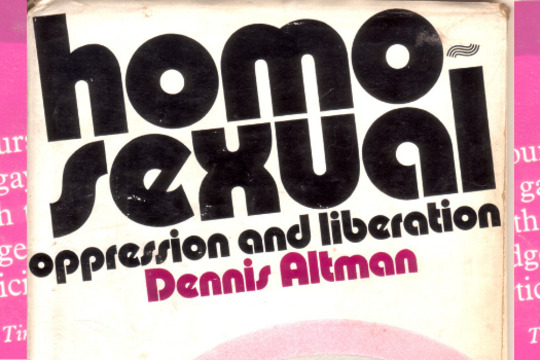Graffiti
'In the climate of death in the great cities, graffiti is both the true urban folk art and the spontaneous self-expression of the cultural proletariat.' Tim Piggott, Digger
Graffiti paint ups became a regular protest act for Gay Liberation and the Radicalesbians, and was one of the strengths of each group. Chris Sitka recalls that “painting up walls was, of course, one of our fortes.” One of the first explicitly lesbian graffiti paint ups, in two foot high letters on the corner of Rae Street and St George’s Road, Fitzroy, proclaimed that ‘Lesbians are lovely’, with lesbians continually repainting it whenever it was cleaned off until it became an almost permanent fixture.
One of the shortest-lived paint ups was on the convent wall on the corner of Nicholson and Princess Streets. Chris Sitka recalls:
'It was off by the next morning. You could only just see its outline on the cleaned bricks. It took the prize as the shortest lasting lesbian graffiti in our career. Lyndel recalls that the wording definitely implied that nuns were lesbians. Something like ‘Lesbian Sisters’.'
The regularity of graffiti paint ups, particularly those by the Radicalesbians, became so common that, at least in the inner city areas of Fitzroy and Carlton, the police started claiming that they were “collecting photos and could identify hand-writing, or paint writing as it were, to pin signs on women caught.”
The graffiti pictured here is fondly remembered by many as one of the longest pieces of Melbourne graffiti ever written. In response to a newspaper article claiming Gay Liberation was a cultist deviation, the anonymous graffiti artist wrote ‘Gay Liberation is not a “cultist deviation”.... it is a movement embodying the revolutionary will of the oppressed!’













